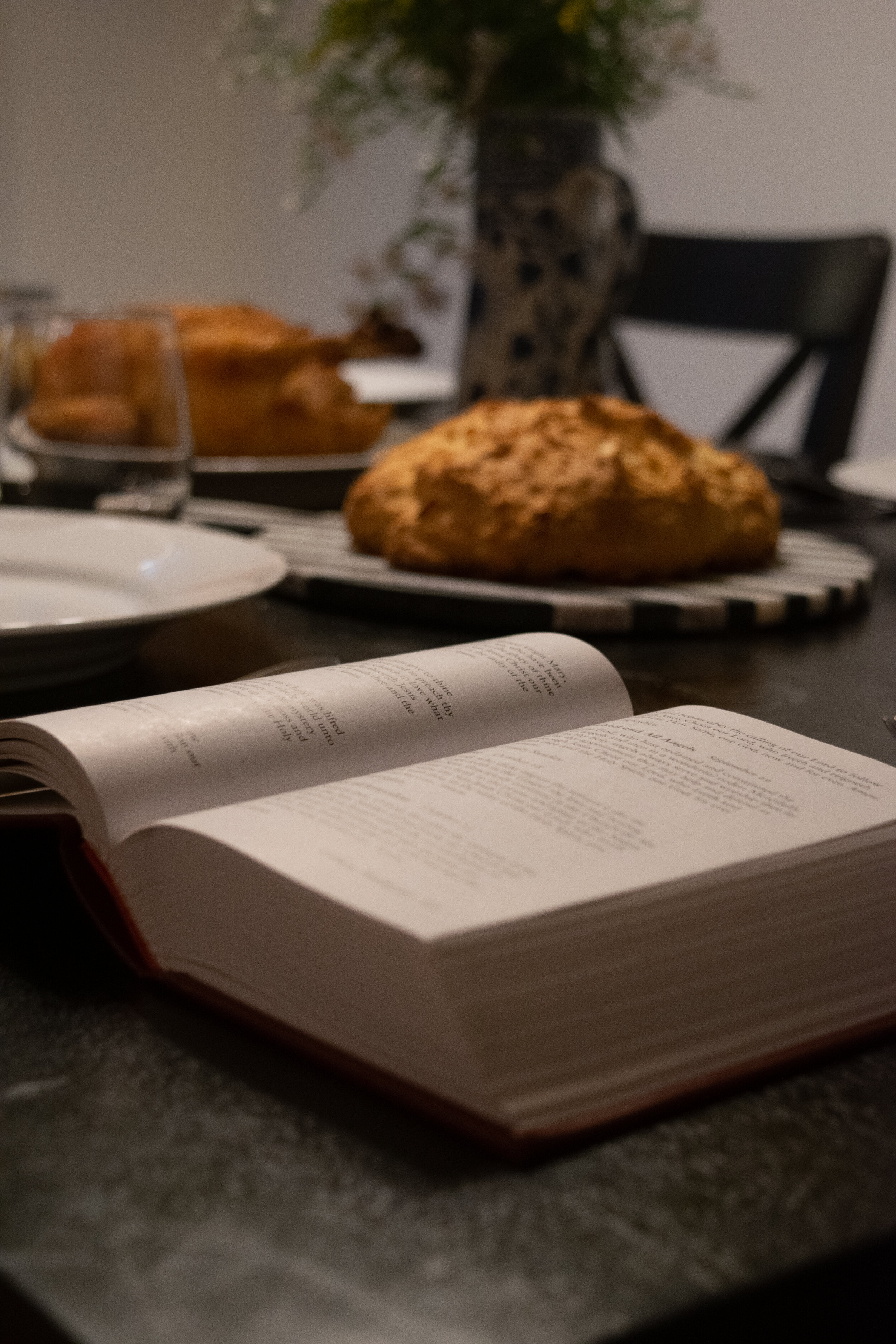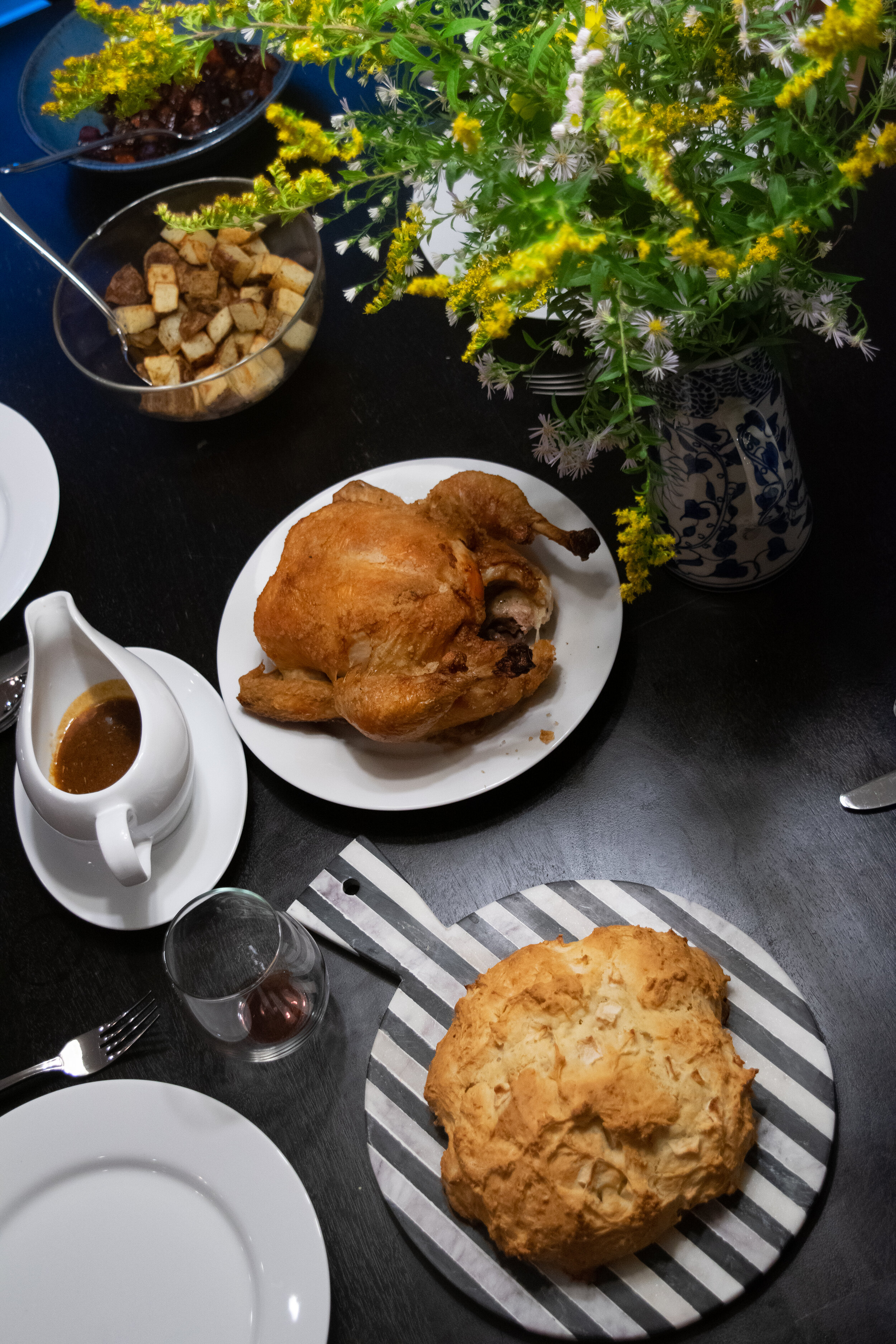Michaelmas and Liturgical Living
It’s not anything revolutionary to say that managing family life during this pandemic has been challenging, but I’ve found that it’s brought to fruition a few things that I’d been wanting to implement in our home for a long time. Up until now I hadn’t had the…time? motivation? GUMPTION to make them happen, but since so much of our focus is on being at home (and being at home well) these days, I’ve started to do a few things that I hope to keep as part of our family traditions for a long time.
One of those things is paying a bit more attention to the liturgical calendar. Just prior to James’ baptism on August 16th, we met with a few families and our priest to discuss the meaning of baptism and how we were going to be leading our children in faith. One of the things he said stuck with me: “We remember what we celebrate.” And it’s true! For most people, myself included, our fondest memories of childhood surround celebrations - Christmas, holidays, birthdays, achievements.
I want my children to have fond memories linked to celebrations of God’s goodness. That’s easy for things like Easter and Christmas, but those only come around once a year. But the liturgical year includes so much more richness that we haven’t yet plumbed, and now is the time.
I started small. Michaelmas, a feast day on the liturgical schedule that celebrates Michael the Archangel defeating Satan, was next up in the calendar year (September 29th), and historically was celebrated with a host of traditions. These traditions ranged from the doable to the folklore-esque, so I picked from that bank of ideas and made us a Michaelmas celebration. I chose four things to do: we’d spend time outdoors to appreciate the unseasonably warm but still fall-ish weather; we’d pick wild asters (also known as St. Michael’s daisies) to make a bouquet for our dinner table; we’d have a feast for dinner; and we’d sing a hymn. Fortunately our hymnal contains a handful of hymns for the Feast of St. Michael and All Angels, so we had some good ones to choose from.
For the outdoor adventure, we checked out a place we’d never been before, and it was a complete home run. I can’t believe we’ve lived in this area now for five years and hadn’t discovered it yet! The Parker River Wildlife Sanctuary made me totally love Plum Island, and I now “get” Plum Island. It previously hadn’t held a lot of appeal for me beyond one of our favorite breakfast spots (I’m looking at you, Mad Martha’s), but now consider me a FAN.
When we got home from our exploration, I put the kids down for their nap/quiet time, and then I started cooking. In Celtic tradition, the Michaelmas menu usually includes roasted goose, carrots, blackberry pie, and St. Michael’s bannock. Not having a goose to roast and not particularly loving blackberries myself, I opted for a roast chicken, carrots, roasted potatoes, and St. Michael’s bannock, for which I found a recipe thanks to the wealth of information that is the internet. For my own future reference: I used this recipe for the chicken and gravy (though the gravy was FAR too salty, so I’d do that differently next time), and this recipe for the carrots. I didn’t use a recipe for the roasted potatoes…just chopped them up, doused them with olive oil, salt, and Italian seasoning, and roasted them at 450 for 25-30 minutes. They were delicious.
Sidebar: the Michaelmas association with blackberries is the bizarre folklore bit that I mentioned above. Lore has it that when the devil was hurled out of heaven down to earth, he landed in a blackberry bush and either trampled or urinated on the berries, depending on who you ask about this story. Given that they are supposedly either squashed or gross, adherents to this story consider September 29th to be the last day blackberries can be harvested. Please note: this is not even remotely biblical and it actually made me laugh. Perhaps I’m a Michaelmas heathen.
After Elise got up from her quiet time, I sent her out with my mom to collect the asters (and goldenrod) for our supper bouquet while I cooked. Asters are one of the latest-blooming flowers of late summer/early fall, and given their alternate name, they found their way into Michaelmas tradition as well. Elise had a blast and she and my mom collected quite the lovely spray, even if I tend to think asters and even goldenrod look a tad bit weedy. Now they’re weedy and festive.
I finished cooking, and we sat down to the table. Before eating, we took a break from our standard ad hoc pre-dinner prayers and instead read the collect for Saint Michael and All Angels from the Book of Common Prayer: “O everlasting God, who hast ordained and constituted the ministries of angels and men in a wonderful order: Mercifully grant that, as they holy angels always serve and worship thee in heaven, so by thy appointment they may help and defend us on earth; through Jesus Christ our Lord, who liveth and reigneth with thee and the Holy Spirit, one God, for ever and ever. Amen.”
And then we feasted.
It was delicious, and we followed it up with apple crisp and chocolate, because no meal is complete without dessert, in my humble opinion. Even (especially?) when it isn’t blackberry pie.
We finished our evening with a rousing rendition of O Ye Immortal Throng, thanks to our resident pro pianist who expertly accompanied our singing. I took zero pictures of that because I was too busy reading the words on the page of the single hymnal that we were all crowded around, which felt more important than photography at the time.
All in all, we decided it should be an annual thing. Throughout the last several months I’ve felt a strong pull toward pursuing a deeper faith, and having these types of celebrations as milestones throughout the year is a helpful reminder to look to God as the source of all goodness, and particularly this year, hope during trial. Bring on All Saints’ Day, Candlemas, Epiphany…we’ll celebrate them all.




